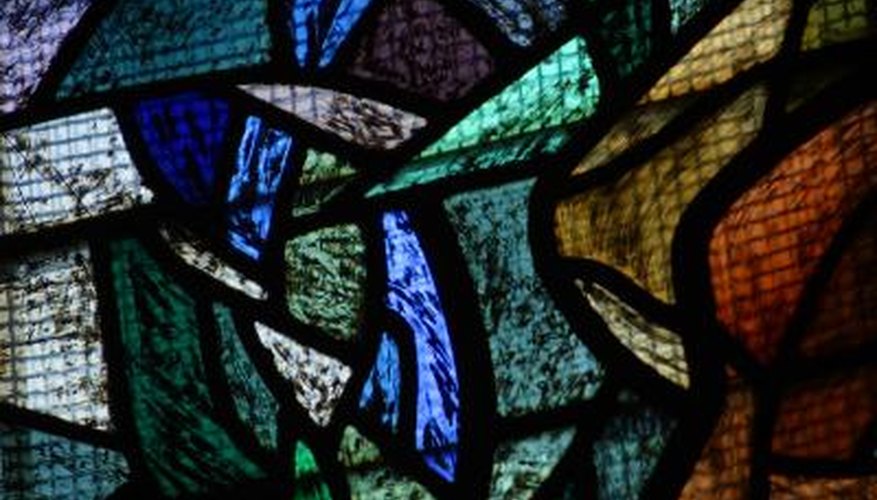Choosing a soldering iron is an important process for the amateur and professional stained glass artist. While soldering irons are used for electronics repair and construction, the type of soldering iron used for stained glass is different. Isolate your search to a stained glass soldering iron, and choose one recommended by stained glass suppliers and artists to find the one that's best for you.
Wattage and Design
The first element to consider in choosing the best soldering iron for stained glass projects is to buy an iron that provides between 80 and 150 watts. An iron with a wattage output of less than 80 watts won't heat solder fast enough to use on stained glass projects. In additional to wattage, consider the weight, handle and overall design of the iron. The best soldering irons for stained glass projects are lightweight with ergonomic handles and a balanced design. If at all possible, try to handle the iron(s) you're interested in purchasing in person before buying them, as the best one will be the one that feels most comfortable in your hand. It should also not feel heavier at one end of the unit than the other.
- The first element to consider in choosing the best soldering iron for stained glass projects is to buy an iron that provides between 80 and 150 watts.
Tip Style
The best irons have a chisel style tip that distributes solder evenly and consistently as it melts off the solder wire and onto your prepared copper foil. Look for a soldering iron that comes with a 700 degree tip as that gives you the level of precision you need to create delicate, thin and even lines. Consider purchasing a pack of replacement tips, which come in 600, 700 and 800 degree four-packs. The pack gives you more options for decorative lace soldering and effective options for working with harder metals like zinc and brass.
- The best irons have a chisel style tip that distributes solder evenly and consistently as it melts off the solder wire and onto your prepared copper foil.
- Look for a soldering iron that comes with a 700 degree tip as that gives you the level of precision you need to create delicate, thin and even lines.
Temperature Control and Heating
Look for an iron with a variable temperature control called a rheostat included in the design. Irons come in two basic types --- one where the temperature regulator is built into the tip of the iron and one with a separate rheostat control knob. The first works like a thermostat, automatically kicking in additional temperature when the tool senses it needs it, while the latter works like a dimmer switch. Some irons have a rheostat knob built into the handle, which can be adjusted to the desired temperature, while others have a separate device into which the iron plugs. The latter offers more manual control over the iron, much like photographers have with an advanced digital camera with manual control options. Decide which style suits your needs best and select that iron.
- Look for an iron with a variable temperature control called a rheostat included in the design.
- The first works like a thermostat, automatically kicking in additional temperature when the tool senses it needs it, while the latter works like a dimmer switch.
Best Selling Brands
The Weller 100W soldering iron is an old standby and best seller when it comes to soldering irons. With 100 watts of power, it is ideal for melting solder at an acceptable rate during stained glass projects. This iron can also be used to solder brass lamp accessories to the lamps themselves. A variety of models are available from Weller, Hakko, Ungar and Inland brands and are all excellent choices for stained glass projects.
- The Weller 100W soldering iron is an old standby and best seller when it comes to soldering irons.
- With 100 watts of power, it is ideal for melting solder at an acceptable rate during stained glass projects.
